Ornamental shrimp refers to a type of freshwater crustacean that is characterized by its color, shape or other characteristics and is regarded as an ornamental object. Ornamental shrimps have different shapes. Some species are small and exquisite, with eye-catching colors, while others have strange and attractive shapes. So what are the easy-to-raise ornamental shrimps for novices? The editor has brought you the top ten types of ornamental shrimps that are easy to raise, including: Extreme Fire Shrimp, Sakura Shrimp, Yamato Seaweed Shrimp, Green Crystal Shrimp, Beauty White Shrimp, White Claw Shrimp, Black Shell Shrimp, Florida Blue Claws, and Glazed Shrimp. Let’s take a look at shrimps, snowball shrimps, etc.
1. Extremely Fire Shrimp
The fire shrimp is a common ornamental shrimp, also known as the "flaming cherry blossom shrimp". Typically originating from China and Taiwan, they are a variant of the Sakura Shrimp and have very bright colors. The body of the fire shrimp is dark red or orange-red, which will be more dazzling under the light. The fire shrimp is a shrimp that is relatively easy to breed and can reproduce quickly in the aquarium. Their size is about 1-2 cm, making them suitable for breeding in small aquariums. Extremely fire shrimps are shrimps that reproduce asexually, that is, there are obvious differences between male shrimps and female shrimps, and female shrimps can give birth to batches of eggs. After the shrimp larvae are born, they need to be provided with enough food and a safe hiding place so that they can grow and thrive.
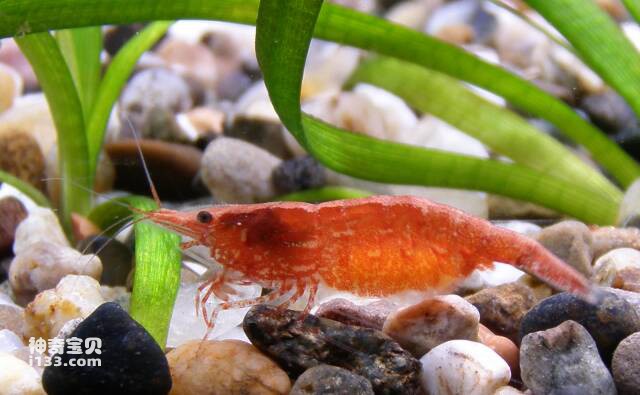
Compared with other ornamental shrimps, the extreme fire shrimp does not have very high requirements for water quality, but it still requires appropriate parameters such as water temperature, PH value, and hardness. They can eat a variety of foods, including decaying plant and animal matter, aquatic plants, shrimp bait meal, etc. It should be noted that shrimp bait powder should be used in an appropriate amount to avoid affecting the water quality. In short, the Extreme Fire Shrimp is a very beautiful, easy-to-breed, and beginner-friendly ornamental shrimp that is very popular among shrimp enthusiasts.
2. Sakura Shrimp
Sakura shrimp is a very popular ornamental shrimp, also known as "Sakura red shrimp" or "red cherry blossom shrimp". Native to China and Taiwan, sakura shrimp usually appear light red or bright orange-red, sometimes with white or transparent spots or stripes. The color of this shrimp is very beautiful, which will easily attract the eyes of shrimp lovers.
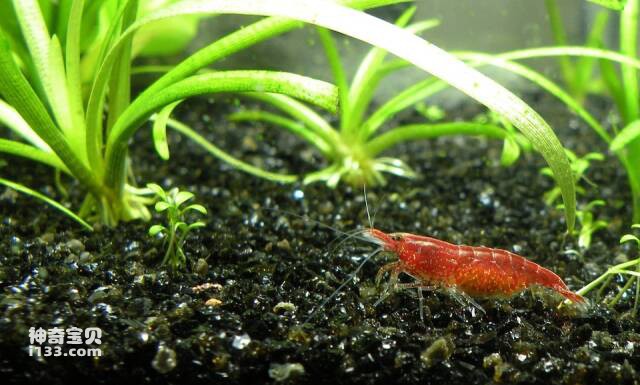
Sakura shrimp are usually relatively small, about 1-2 cm, and are more suitable for breeding in small aquariums. They are shrimps that reproduce asexually. There are obvious differences between male shrimps and female shrimps, and female shrimps can give birth to batches of eggs. After the shrimp larvae are born, they need to be provided with enough food and a safe hiding place so that they can grow and thrive.
Sakura shrimp does not have very high requirements for water quality, but it still requires appropriate water temperature, pH value, hardness and other parameters. They can eat a variety of foods, including decaying plant and animal matter, aquatic plants, shrimp bait meal, etc. It should be noted that shrimp bait powder should be used in an appropriate amount to avoid affecting the water quality. In short, the Sakura Shrimp is a very beautiful, easy-to-breed, and beginner-friendly ornamental shrimp that is very popular among shrimp lovers. If you're looking for a beautiful and easy-to-grow shrimp, Sakura shrimp may be a good choice.
3. Yamato algae shrimp
Also known as Yunnan toothless shrimp, Shandong spineless shrimp, corn shrimp, etc., the Yamato algae shrimp is a popular freshwater ornamental shrimp suitable for breeding in medium to large aquariums. They are usually translucent or gray, with many white or yellow spots or stripes on their bodies, which are very beautiful. The Japanese algae shrimp can usually grow to 2-3 centimeters in length. It is an omnivorous shrimp that can eat a variety of foods, including decayed plant and animal matter, aquatic plants, shrimp bait powder, etc.

In addition to being a beautiful ornamental shrimp, the Yamato algae shrimp is also widely used for ecological control in aquariums. They will eat various harmful bottom sediments and plankton in the aquarium, helping to keep the water clean and stable, thus reducing reliance on chemicals. In short, the Yamato algae shrimp is a beautiful and practical shrimp that plays a good decorative and ecological control role in the aquarium. If you are considering raising freshwater ornamental shrimp, the Yamato algae shrimp is an option worth considering.
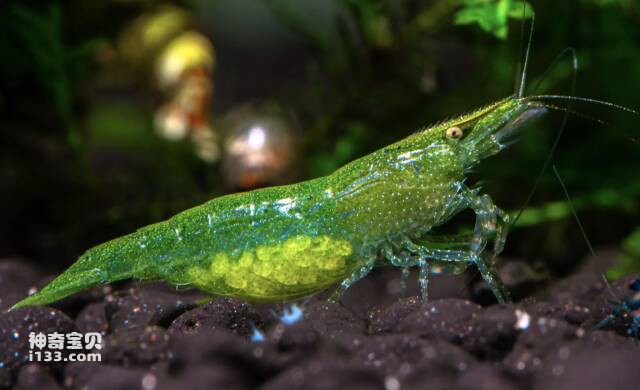
4. Green Crystal Shrimp
Green crystal shrimp, also known as New Guinea crystal shrimp, is a freshwater crustacean originating from Papua New Guinea, Indonesia. They usually grow to about 5cm long and are known for their beautiful color and clear shell. Green crystal shrimp live in fresh water, and they need a stable water quality and temperature environment to survive. These shrimps are often kept in aquariums because they make great house pets. They can eat different types of food, including vegetables, fruits, and meat. These shrimp are usually more active at night and can be seen in the aquarium swimming through the water. Green crystal shrimps are also popular for their beautiful appearance, with their bodies appearing emerald green or light blue in color, as well as their transparent shells and slender claws. Due to their beauty and unique characteristics, the Green Crystal Shrimp has become one of the favorites of aquariums and shrimp fans alike.
5. Beautiful white shrimp
Elegant white shrimp, also known as snow white shrimp, white jade shrimp, pearl shrimp, etc., is a common freshwater cultured shrimp. They usually grow to around 2-3 cm and have a uniquely beautiful appearance and gentle personality. The body of the beautiful white shrimp is pure white or with faint yellow or blue spots. It has a clean and refreshing appearance and is very beautiful. These shrimps have small heads and thick bodies, and their tails are covered with a transparent membrane that looks like a sail.
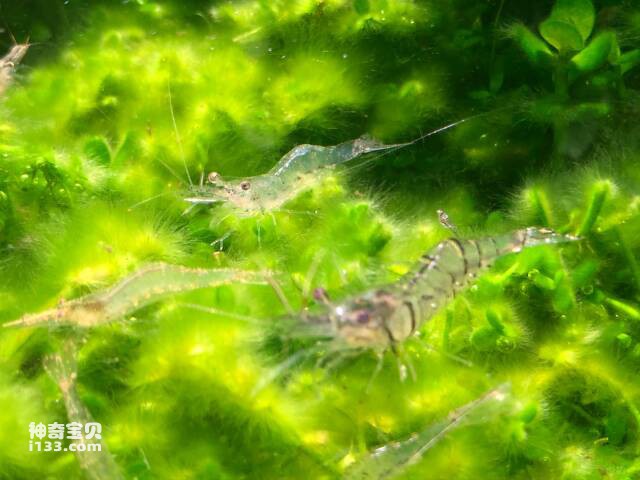
The white shrimp does not have high temperature requirements in the water and is suitable for survival in an environment of 20-28 degrees Celsius. They usually like to find food and hiding places under the sand and rocks at the bottom of the aquarium. These shrimps are also sensitive to water quality and need to keep the water quality clean and stable. The appropriate pH value is 7.0-8.0 and the hardness is 4-8 dGH or higher. The white shrimp is a gentle and friendly shrimp that will not attack other fish or shrimp. They are omnivores and can eat plants, algae, small aquatic animals, etc. Due to their beautiful appearance and gentle temperament, the White Shrimp is ideal for keeping in home aquariums.
6. White Crayfish
White crayfish, also known as giant white-legged shrimp, is a type of freshwater shrimp. They usually grow to about 10 centimeters and are one of the larger freshwater shrimps. White crayfish are famous for their delicious meat and are also a valuable aquarium pet. The body of white crayfish is grayish white or light yellow, with a small head and a relatively long and slender body. They have very strong, large pincers used for catching prey and for defense. In addition, white crayfish have many yellow or brown spots on their bodies, which look very beautiful.

White crayfish have relatively high requirements for water quality. They need to keep the water clean and stable, with a suitable pH value of 7.0-8.0 and a hardness of 4-8 dGH or higher. They usually live in still water, such as rivers, ponds, and lakes. White crayfish are omnivorous animals that can eat plants, algae, small aquatic animals, etc. They are also carnivores and can prey on other small aquatic animals. When raising white crayfish in an aquarium, you need to pay attention to the amount and type of food they eat, and overfeeding is not advisable. Generally speaking, white crayfish is a kind of shrimp suitable for advanced aquarium enthusiasts to breed, and it is also a delicious edible shrimp.
7. Black shell shrimp
Black-shell shrimp, also known as black tiger shrimp, is a type of freshwater shrimp. Their shells are black or dark gray, their bodies are short and thick, and they usually grow to about 6-8 cm. They are a relatively small freshwater shrimp. Black-shell shrimp are popular for their delicious meat and are also a valuable aquarium pet. They are small and exquisite in size, agile in movement, lively and cute, and are very suitable as ornamental marine creatures in aquariums.
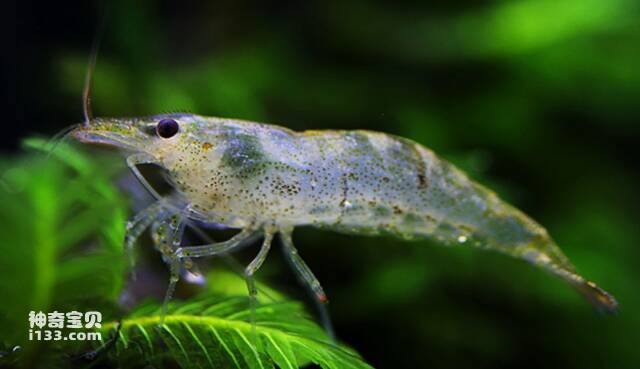
Black-shell shrimp do not have high requirements for water quality and can survive in various water quality environments, but it is best to keep the water quality clean and stable, with a suitable pH value of 7.0-8.0 and a hardness of 4-8 dGH or higher. They usually live in still water, such as rivers, ponds, and lakes. Black-shelled shrimp are omnivorous animals that can eat plants, algae, small aquatic animals, etc. They are also carnivores and can prey on other small aquatic animals. When raising black-shelled shrimp in an aquarium, you need to pay attention to the amount and type of food consumed, and overfeeding is not advisable. Generally speaking, black-shell shrimp is a kind of shrimp suitable for primary aquarium enthusiasts to breed. It is also a delicious edible shrimp with a wide market.
8. Florida blue claws
Florida blue claw is a kind of freshwater lobster, also known as American blue lobster, Florida lobster, etc. They are relatively large freshwater crustaceans, usually growing to about 15-20 centimeters, with dark blue or gray-blue bodies and very strong large pincers. The Florida blue claw is a species native to Florida, USA, and is also widely distributed around the world. Known for their delicious flesh and ornamental appearance, Florida blue claws are a very popular aquarium pet. When raising Florida blue claws in an aquarium, you need to pay attention to its water quality requirements. The optimal pH value is 7.0-8.0, the hardness is 4-8 dGH or higher, and the water temperature should be maintained between 20-25°C.
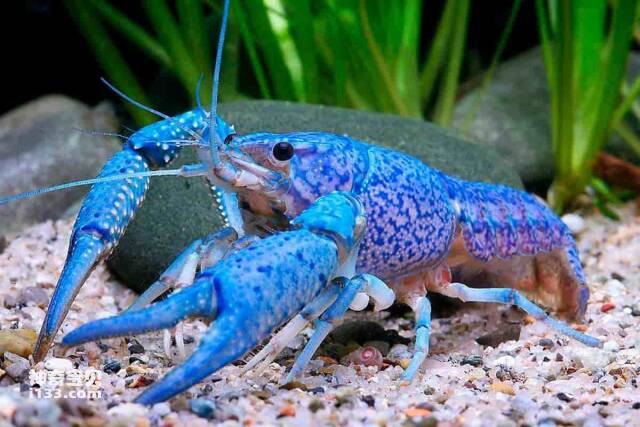
Florida blue claws are omnivores that can eat plants, algae, small aquatic animals, etc. They are also carnivores and can prey on other small aquatic animals. When raising in an aquarium, you can feed some shrimp bait, small fish, etc. It should be noted that because Florida blue claws have a unique smell and irritating secretions, they should be prevented from escaping into natural waters during the breeding process to avoid affecting the local ecological environment.
Overall, the Florida blue claw is a pet suitable for advanced aquarium enthusiasts. It is also a delicious edible lobster with a wide market.
9. Glass shrimp
The glass shrimp, also known as the clown freshwater shrimp, is a small freshwater crustacean belonging to the family Daphniaidae of the order Decapoda. They usually grow to about 2-3 cm, and their body color is mostly translucent or light brown, with very beautiful blue and red spots. Glass shrimps are a very suitable pet to keep at home, not only because they are beautiful and easy to raise, but also because they can help clean up water and maintain a good ecological balance. When raising glass shrimp, you need to pay attention to keeping the water quality clean, the temperature stable, and providing appropriate food. They are omnivores and can eat plants, algae, small aquatic animals, etc. They can also feed some specialized shrimp bait and fish bait.
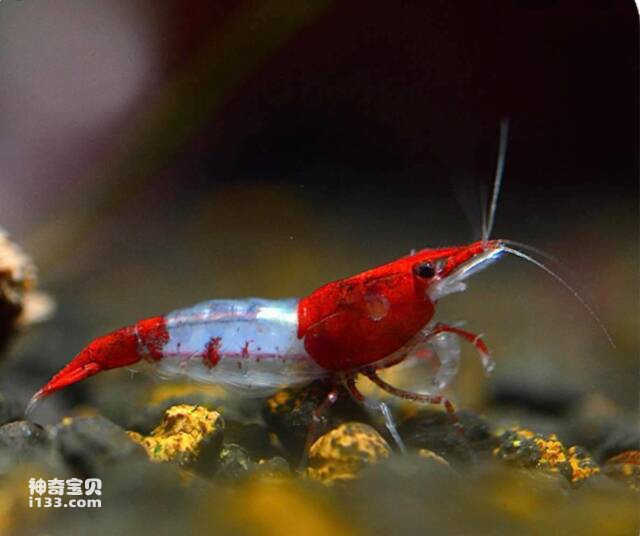
Glass shrimps are widely distributed in nature and mainly live in freshwater waters such as rivers, lakes and ponds. Due to its beautiful appearance and easy maintenance, glass shrimp has also become one of the popular species in the freshwater aquarium pet market. It should be noted that glass shrimps are omnivores. If the amount of feed is not controlled well, overfeeding may lead to deterioration of water quality and overproduction of shrimp groups. Therefore, it is necessary to pay attention to reasonable control of feed amount and regular replacement of water quality when raising.
10,,
Snowball shrimp is a freshwater farmed shrimp, also known as snowball shrimp. They usually grow to about 2-3 cm, have a round body, clear shell, and pure white or light yellow color. Snowball shrimp are a suitable pet to keep in the home because they are easy to breed, grow quickly, have low water quality requirements, and can coexist with other small freshwater fish. When raising snowball shrimp, you need to pay attention to keeping the water quality clean, the temperature stable, and providing appropriate food. They are omnivores and can eat plants, algae, small aquatic animals, etc. They can also feed some specialized shrimp bait and fish bait.
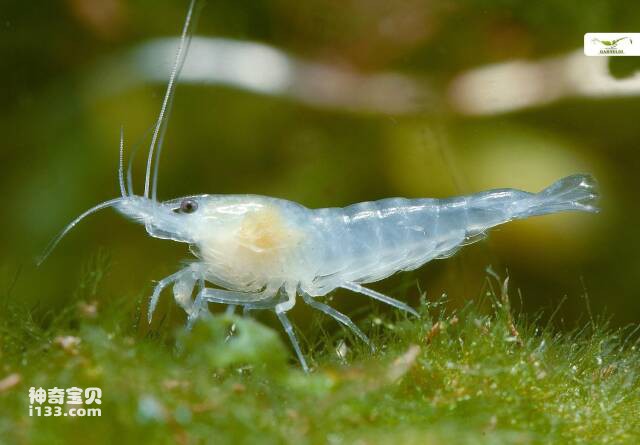
Snowball shrimp originally originate from southern China, but are now widely distributed around the world. In addition to the white variety, there are also varieties of snowball shrimp in red, blue, black and other colors. The color of snowball shrimp can be affected by many factors such as genetics and environment, so its color variation can be promoted by controlling environmental conditions during farming. It should be noted that snowball shrimp are omnivores. If the amount of feed is not controlled, overfeeding may lead to deterioration of water quality and overproduction of shrimp groups. Therefore, it is necessary to pay attention to reasonable control of feed amount and regular replacement of water quality when raising.
Some ornamental shrimps are more suitable for novices to breed because they have less stringent requirements for water quality and environment. However, it should be noted that no matter what kind of ornamental shrimp, stable and appropriate water temperature, pH value, hardness and other parameters are required, and appropriate food and sufficient hiding places need to be provided.
animal tags:
We created this article in conjunction with AI technology, then made sure it was fact-checked and edited by a Animals Top editor.